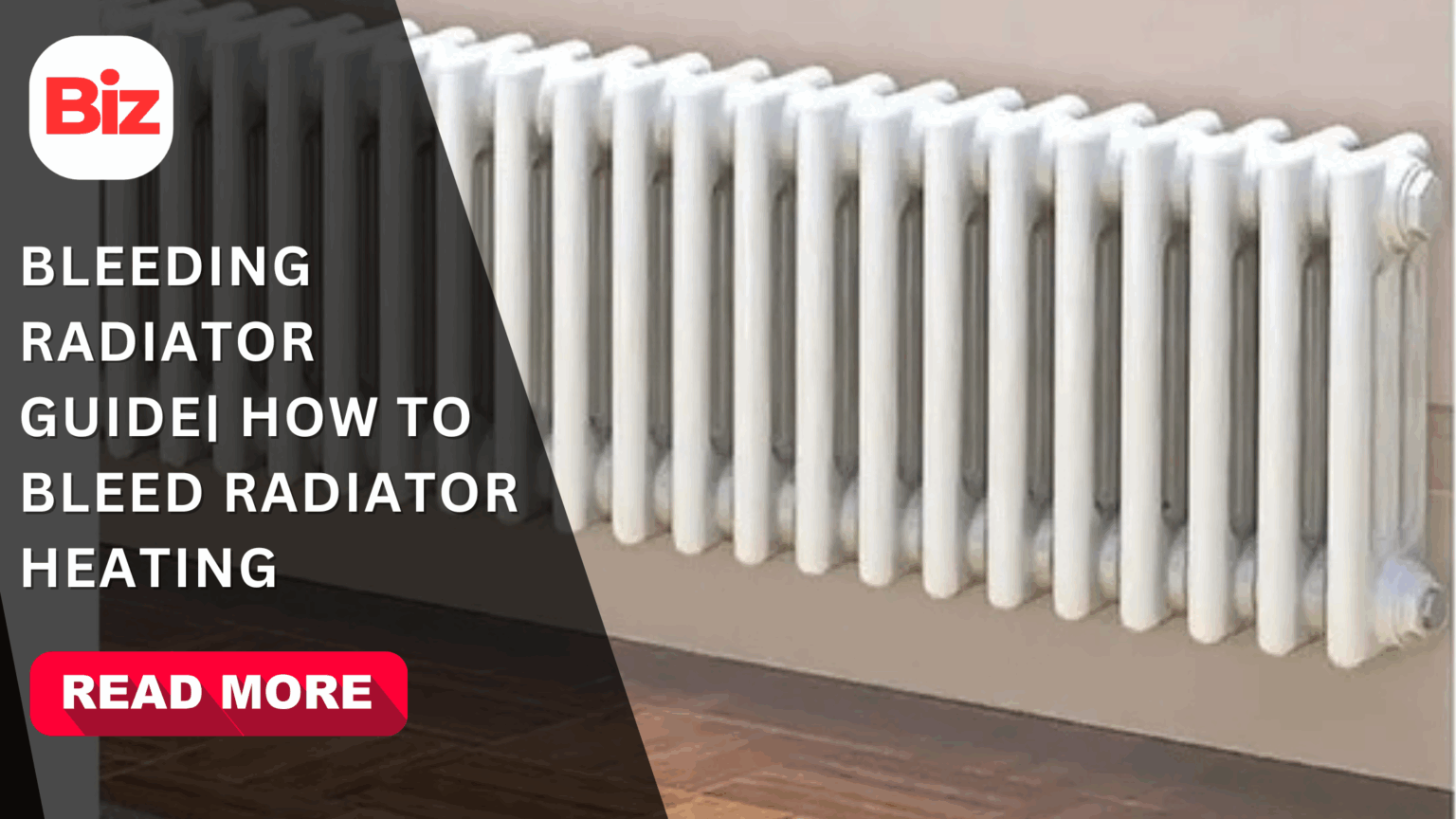When autumn changes into winter, the last thing you want to do is turn on your central heating only to realize that the top of your radiators have cold spots. It is a typical indicator that your heating system has to be taken care of. Fortunately, the answer is very frequently easy: bleeding radiators.
What is the meaning of Bleeding a Radiator?
The act of opening the air trapped in your heating system is known as bleeding radiators. In the long run, the pipes and radiators may become filled with air bubbles. The air is not heavier than water and, therefore, it ascends to the surface of the radiator, so that some of it is always cold, even when your heater is turned on.
Unattended, trapped air can cause your heating to be less efficient, and your energy bills to be higher and your home to be less comfortable.
Symptoms You Have to Bleed You Radiators.
You may have to empty your radiator heating system whenever you observe:
- cold places on top of radiator, bottom warm.
- Wheezing or gurgling sounds in your radiators.
- Your central heating takes a long time to heat the house.
- Lack of uniformity in the distribution of heat between various rooms.
When these problems ring a bell, then it is time to pick your radiator key.
Tools that needed:
Make sure you have the following before you begin:
- Radiator Key: A small screwdriver that is used to open the radiator bleed valve. These are readily available in the hardware shops in the UK.
- Cloth or Towel: To absorb excess drops of water.
- Bowl or Container: This is optional, but it is handy to prevent spills.
- Protective Gloves: Keep your radiator hot.
How to Bleed Radiator Heating Step-by-Step Guide.
This is the way the radiators can be safely and effectively bled by the UK homeowners:
Turn Off the Heating
Turn off your central heating system and allow your radiators to cool. This guarantees that you are not burnt by hot water and it is also simpler to identify stuck air.
Find Radiator Bleed Valve.
There is a little square-shaped fitting at the top corner of every radiator, this is the radiator bleed valve.
Insert the Radiator Key
Insert the radiator key on the valve. Turn it in a quarter turn, slowly, anticlockwise.
Release the Air
You will hear hissing of air that has been trapped. Hold the valve open till the water begins to trickle out slowly.
Catch the Drips
Get any water that escapes using a cloth or small bowl. When the flow of water ceases to spurt, turn the valve clockwise and close it.
Repeat for Other Radiators
Start at the bottom of the house and fill every radiator with blood, and go up to the top of the house.
Check Boiler Pressure
Check the pressure gauge to the boiler after bleeding. In case it has gone too low then you might be required to repressurise the system as per your boilers manual.
Turn the Heating Back On
Turn your heating back and make sure that your radiators are warming evenly up to the top.
The importance of Regular Bleeding Radiators.
- Enhances Efficiency: Your boiler will not be working as hard, and will save energy.
- Saves on Heating: There is less energy wastage so the bills are less.
- Extinguishes Long-term Damages: Expands central heating system life span.
- Improves Cosiness: Radiators are a warm home in UK winters.
Experts advise to bleed radiators at least once a year preferably before winter starts.
FAQs
- Is it possible to bleed radiators without radiator key?
The majority of radiators need a radiator key, although certain new models need a flathead screwdriver.
- Is the water to flow out when my radiators bleed?
Yes, after the air has been got out water will run a steady course. That is your indication to shut the radiator bleed valve.
- How long does it take?
Typically only 2-3 minutes per radiator.
- Do I need a plumber?
Radiators are easy to bleed. Nonetheless, when your radiators are still cold after bleeding, it is possible that there can be sludge in them and you will need to enlist a heating engineer.
Final Thoughts
Knowing how to bleed radiator heating is a basic home maintenance task that the UK households should know. All you need is a radiator key, a cloth and a small amount of time in order to enhance your heating efficiency, decrease your energy bill and make sure your house stays warm during these colder seasons.
Stop waiting until it gets cold–clean up your radiators as part of the annual home routine.








